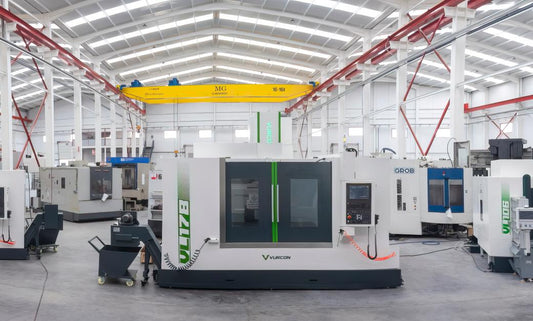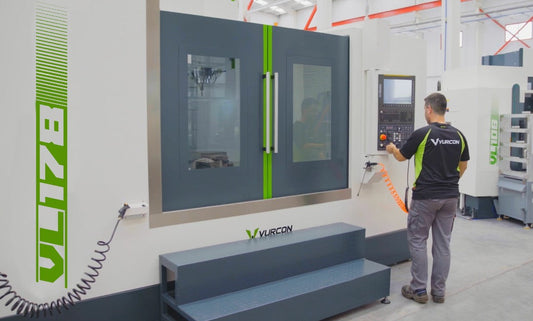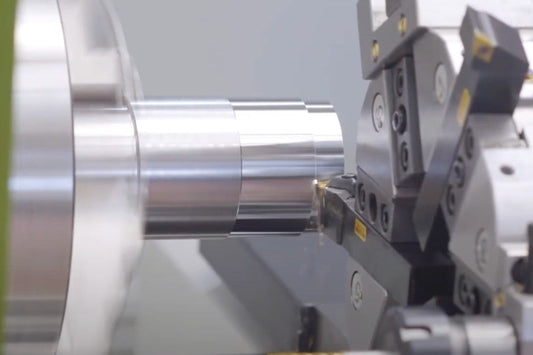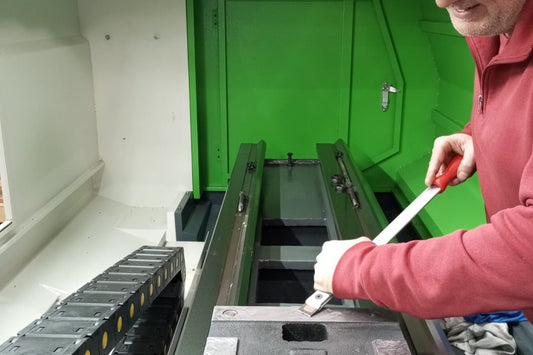What is a CNC machining center and how does it work?

Why use a CNC machining center?
Machining centers emerged thanks to the evolution of the milling machine and the need to increase productivity in machining workshops and factories. Additionally, of course, to ensure the safety conditions of the operators, whose degree of intervention in this type of machinery is minimal.
The CNC machining center allows tasks to be performed not only with minimal human intervention but also at high production speeds, which undoubtedly considerably reduces costs. In the market, it is possible to find multiple types of machining centers grouped according to size, functions, and automation levels. Thus, you can find machines that reach powers of 75 kW and spindle speeds ranging from 4000 to 8000 rpm. And, due to their size, some are capable of supporting up to 7,000 kg of weight. This undoubtedly makes them a great option for machining workshops.
On the other hand, these machines offer the possibility for an operator to control several CNC machines simultaneously, only having to load or unload the piece and make rotations (whenever necessary and not all machining centers require it). Additionally, it is the machine's program that takes full control of the cutting parameters, required speeds, and, of course, the plans.
Why is it a good option to include a CNC machining center in a workshop? Because it allows you to perform basically any type of machining work (it doesn't just do milling), and the operator who handles it only needs to have control of computer programs like CAD and CAM.
Features of Machining Centers
The features of a CNC machining center only bring advantages to workshops. We find that this type of machine is completely reconfigurable, meaning that by simply changing the configuration (from the computer), the machine can perform multiple machining operations on the same piece.
These machines are also flexible and versatile thanks to the artificial intelligence they operate with, allowing production processes to be faster and more uniform. Regarding uniformity, it means that this type of machine is capable of mass or series production, and all the pieces worked on here are practically identical. Something difficult to achieve with manual machines.
But undoubtedly, the most important thing is that these machines, as their name suggests, are equipped with CNC numerical control.
CNC Numerical Control in the Machining Center
Numerical control allows the machine to be fully automatic and operate thanks to programmable codes and alphanumeric characters. CNC itself is a revolution for the machining industry. This type of technology, developed in the second half of the 20th century, works thanks to sophisticated computer programs that, over the years, have been simplified, making it possible for more and more factories and workshops to train their operators to handle the machines that incorporate them.
For the operation of a CNC machining center, CAD and CAM programs are required. The first of these programs is the one that does the actual design of the piece to be machined.
This design is made on a computer using a CAD program. This design is saved and opened in another program, the CAM; it could be said that the CAM is responsible for translating the plan or design into CNC language. Then, the operator only has to instruct the machining center to follow certain instructions to execute the machining process of the design that has been made of the piece. Thus, this type of machine can be easily configured to perform, in a short period of time, the machining of a piece, simply by following the instructions of the computer integrated into them.
Automatic Tool Changer
One might wonder if a lathe or a milling machine using CNC technology in a machining center are the same, why are they different if both incorporate numerical control? At first glance, they seem the same; however, the main difference between these two machine tools and the CNC machining center is that the latter has an automatic tool changer. Undoubtedly, a great feature and advantage over the other two machines.
A CNC machining center has a system that allows automatic switching between tools to perform multiple tasks on the same piece. There is no need for an operator to stop the machine and approach to change, for example, the milling cutter for another tool to rough. However, to perform this task, the operator must program the computer and indicate what the piece is like, what the final design is, and the tools needed to achieve that result. Once this is done, it will be the machine itself that will make the changes between the different types of tools it needs to use.




